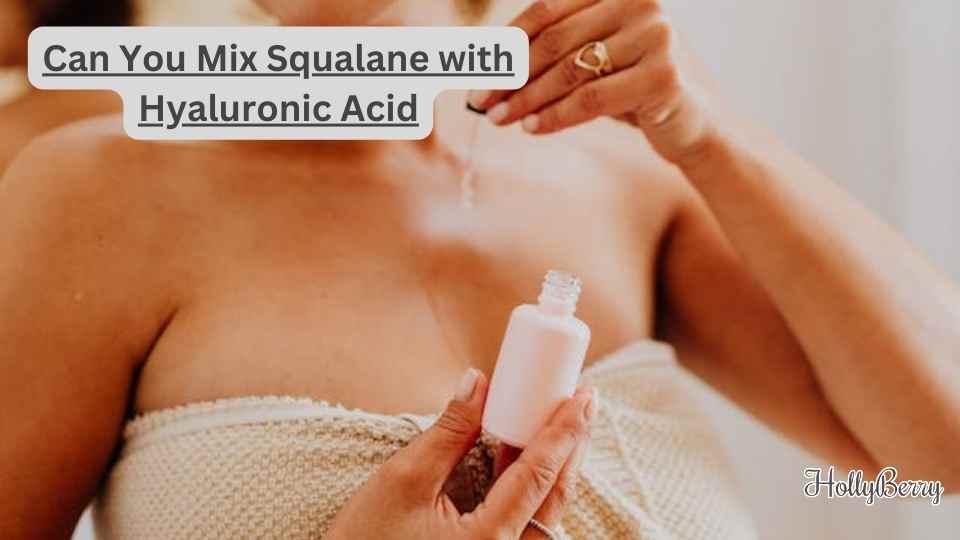
Can You Mix Squalane with Hyaluronic Acid
Share
A Guide to Skincare Layering

Combining skincare ingredients can sometimes feel like a complex chemistry experiment, with an array of potential outcomes.
Among the plethora of ingredients available, squalane and hyaluronic acid are often lauded for their hydrating properties.
Squalane, a stable hydrocarbon derived from squalene, is known for its emollient qualities and ability to mimic natural skin lipids.
Meanwhile, hyaluronic acid, a potent humectant, attracts and holds water in the skin, providing significant hydration.
When it comes to integrating these ingredients into a skincare routine, the pressing question arises: can these two hydration powerhouses be mixed for amplified benefits?
The combination of squalane and hyaluronic acid in skincare is not only safe but beneficial, addressing hydration in a comprehensive manner.
Hyaluronic acid's ability to draw in moisture complements squalane's skill in sealing and protecting the skin barrier. This duo works in tandem to ensure that skin receives hydration from deep within and retains it for longer periods.
Due to their compatible natures, squalane and hyaluronic acid often feature together in skin care products, from serums to moisturizers.
Their collaborative effect can cater to various skin types, offering a plumped, soft complexion without overwhelming the skin.
Including both ingredients in a routine, either through a combined product or layering individual products, is a reliable strategy for enhanced skin hydration.
Benefits and Properties of Squalane and Hyaluronic Acid
Squalane and hyaluronic acid are renowned for their hydrating and skin-rejuvenating properties.
They are commonly found in serums and moisturisers designed to enhance skin hydration, reduce signs of ageing, and balance oil production.
Hydrating Effects on the Skin
Squalane is known for its exceptional moisturising qualities. It mirrors the body’s own moisture, making it particularly beneficial for hydrating the skin.
Hyaluronic acid supplements this by drawing water into the skin, promoting a hydrated and plump appearance, which is ideal for individuals with dry skin.
Together, they ensure that the skin receives a profound level of moisture.
Anti-ageing and Fine Line Reduction
The combination of squalane and hyaluronic acid is effective in targeting ageing. Hyaluronic acid helps reduce the visibility of fine lines by retaining moisture, giving a smoother appearance to the skin.
Squalane supports skin elasticity and also helps reduce the appearance of wrinkles, providing a more youthful complexion.
Balancing Oil Production and Acne Prevention
For those with sensitive or acne-prone skin, squalane is a non-comedogenic, meaning it does not clog pores, which can help in preventing acne.
Its ability to balance oil production makes it suitable for all skin types. Hyaluronic acid’s hydrating properties ensure that the skin isn't stripped of moisture, which is a common concern with acne treatments, thereby maintaining a healthy skin barrier.

Integration into Skincare Routines
Incorporating squalane and hyaluronic acid into a skincare routine can significantly enhance skin hydration and texture. It's important to understand the correct layering techniques and the recommended concentrations to maximise the benefits.
Layering Techniques with Other Products
For optimal results, squalane and hyaluronic acid should be applied after water-based products and before heavier oils and creams.
Hyaluronic acid serves best when it's applied to damp skin, as it attracts water and retains moisture. Following up with squalane oil can help to seal in the moisture provided by hyaluronic acid.
Moreover, these ingredients can be layered with other active substances. A dermatologist may suggest using hyaluronic acid before applying retinol or vitamin C to avoid irritation and support skin’s resilience to these potent ingredients.
However, they should caution against combining it with niacinamide right away, as it may cause redness or flushing in some individuals.
Recommended Concentrations and Usage
For daily use, serums containing 1-2% hyaluronic acid and a few drops of squalane oil are typically sufficient.
A simple routine would involve cleansing, applying a hyaluronic acid serum, and then moisturising with a product containing squalane. It's advised to start with lower concentrations and consult a dermatologist to tailor the amounts as per individual skin tolerance and needs, ensuring a balanced skincare routine without overwhelming the skin.
Especially for those new to these ingredients, dermatologists emphasise the importance of gradual integration to monitor skin’s response and maintain hydration without irritation.
